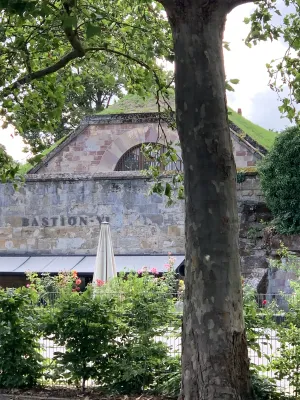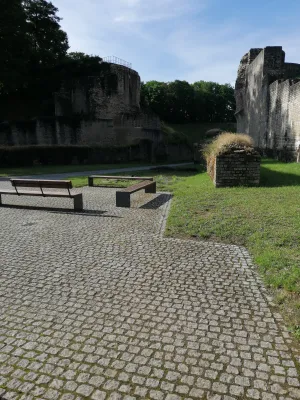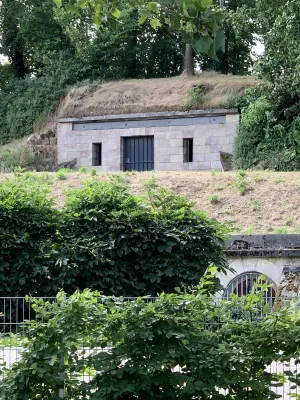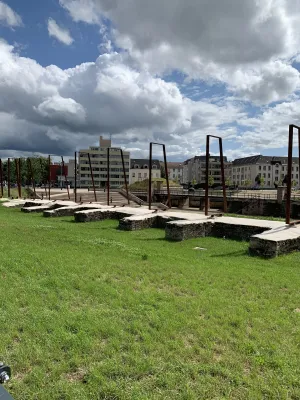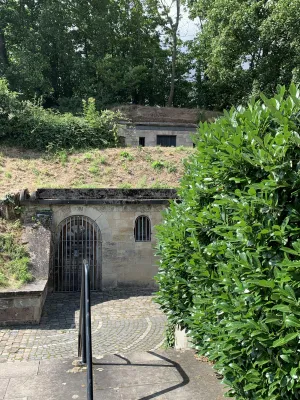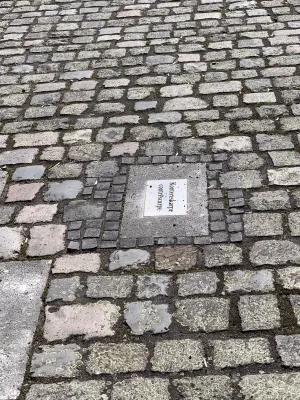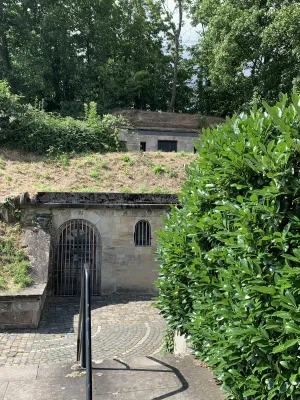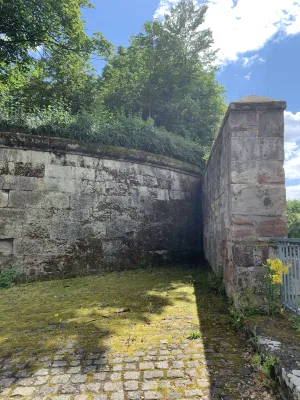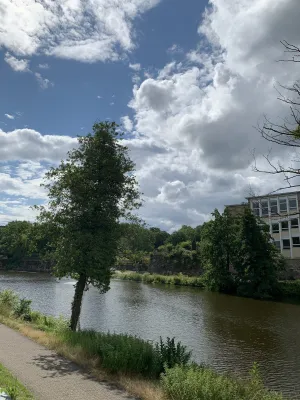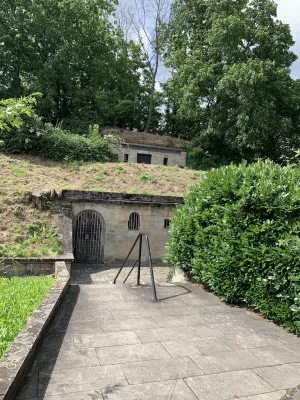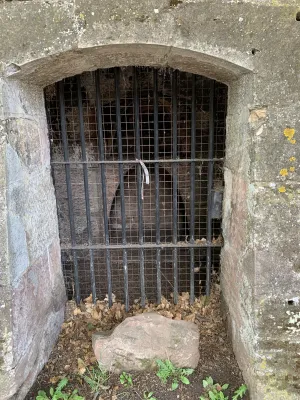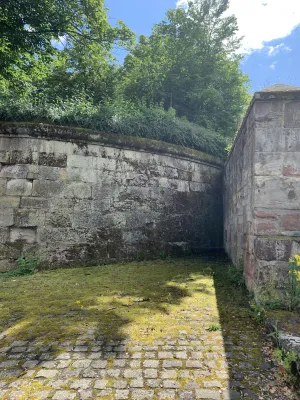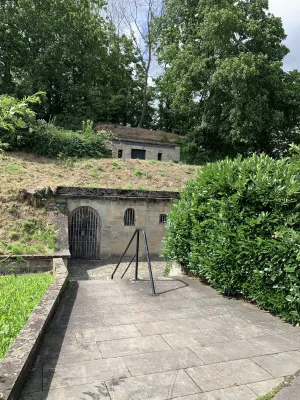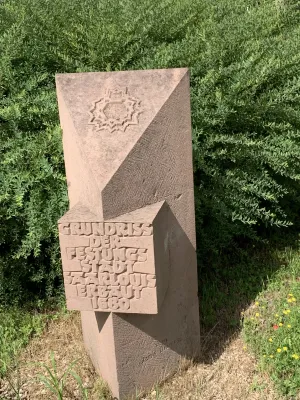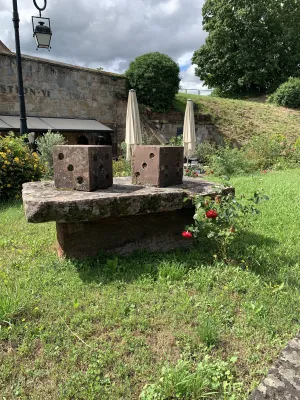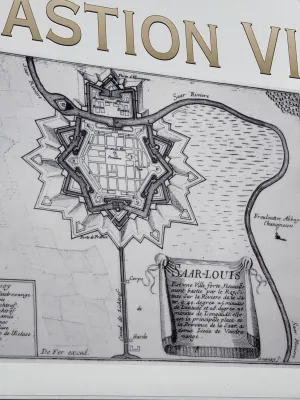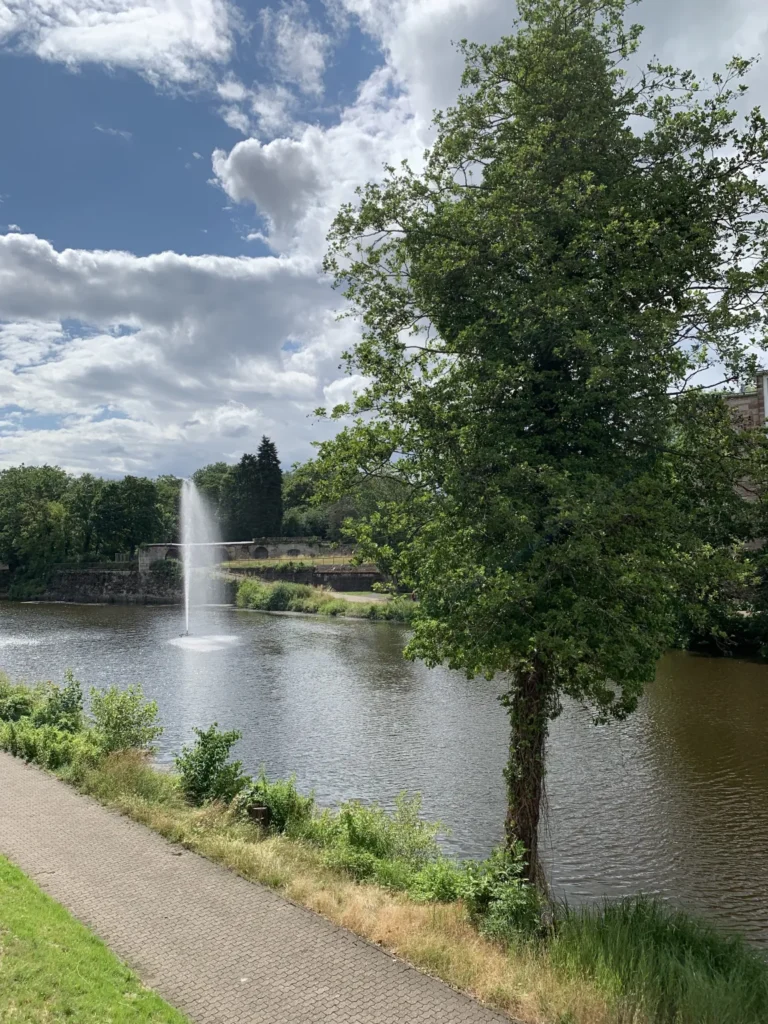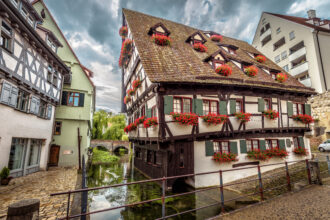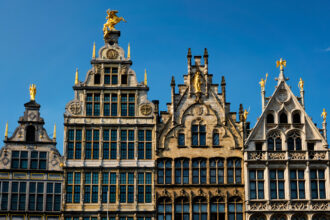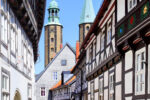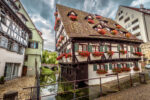The former fortress town of Saarlouis is located in Saarland, Germany’s smallest state. It was built on the orders of the French Sun King Louis XIV, who also gave it its name “Sarre-Louis,” as a fortress to secure the occupied Lorraine borders. In just six years of construction, the flood fortress was built according to the plans of the legendary fortress builder and later marshal Sébastien Le Prestre de Vauban and the builder and first governor of the city, Thomas de Choisy. The fortress was designed in the shape of a hexagon, whose main moat could be fed with water from the Saar in the event of a siege, thus flowing around the six bastions and the connecting curtain walls. The area in front of the fortress was slightly sloping, which was called the glacis. This glacis was followed by a surrounding path that the enemy could not see due to the embankment of the glacis. This path was called a covered way. Adjacent to it was the first rampart, the counter-escarp, and the main fortress wall, the escarp. Between these two walls was a moat that could be flooded in the event of an enemy attack. This fortress was considered impregnable, although no one had ever attempted to conquer the city militarily. After Napoleon was defeated at the Battle of Waterloo in 1815, Saarlouis fell to Prussia and became a district town. The fortress was then demolished in 1889, and the remaining fortress relics were increasingly forgotten until, in the course of the construction of the Anton-Merziger-Ring in 1968 and the expansion of the Saaraltarm recreational area, the water-filled moats were incorporated into the urban green space and the ramparts were used for gastronomic purposes. One highlight is Vauban Island, which houses a monument to Marshal Michel Ney, the most famous and also most controversial citizen of Saarlouis. Born in Saarlouis, Michel Ney joined Napoleon’s campaign as an army commander in 1804 as Marshal of the Empire. He won many battles alongside Napoleon, but lost the decisive one at Waterloo. On December 6, 1815, he was sentenced to death by firing squad for high treason, which was carried out the next morning. Since 1946, a statue of Michel Ney has adorned the Prussian casemate on the “Half Moon” of Vauban Island. Vauban Island and the “Half Moon” were built in 1698 as the so-called Contregarde de l’écluse to protect the lock bridge, the heart of the flood fortress. During his visit to the city in 1821, the Prussian King Frederick William III had this protective structure renamed Contregarde Vauban after the builder of the fortress in order to honor the French architect’s achievement. Since 1973, the statue of the forgotten French soldier Lacroix has also been located there, who still stood guard at the “Half Moon” even though his troops had already withdrawn. When the Prussian soldiers marched in, he was discovered, informed, and sent back to his army with provisions. Saarlouis, the former fortress town whose largest employer today is the car manufacturer Ford, continues to fascinate people from all over the world with the remains of the old 17th-century fortress and allowed me to experience the city’s history up close.
